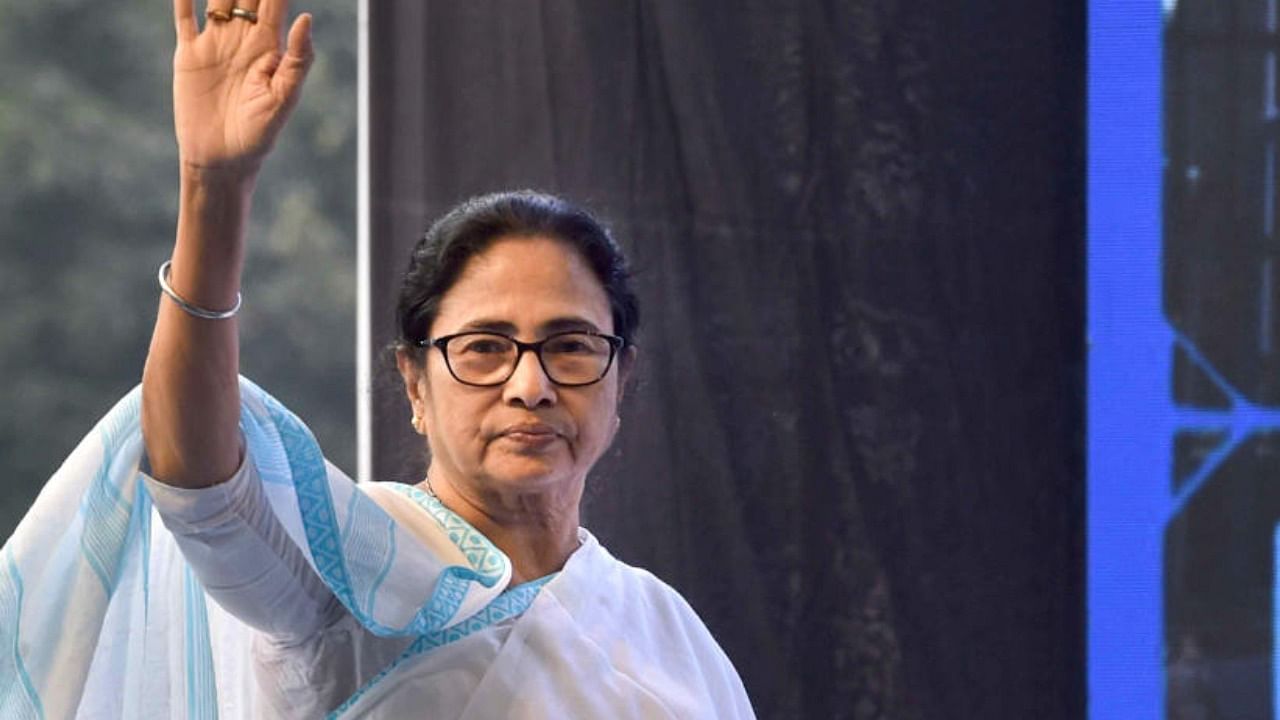
A quarter of a century is, particularly in politics, a long span of time. The Trinamool Congress (TMC) was established on January 1, 1998, though it seems to have been around for longer. The credit for this perception goes to its founder-leader Mamata Banerjee, who has been consistently engaged in a fight against the established order.
In the first phase of her political career, Banerjee fought against the overwhelmingly male dominion within the Congress. Then she fought the paternalism that prevented her ambitious bid to take over the leadership of the West Bengal Congress, and forced her to break away and form her own political party.
Giant-killer
A newbie who was catapulted into the front ranks of the Congress by then Prime Minister Rajiv Gandhi, who made her a national leader of the Youth Congress and a junior minister in his Cabinet, Banerjee became famous for her chutzpah in taking on and defeating Communist Party of India (Marxist) veteran Somnath Chatterjee in the 1984 general election.
By 1997 Banerjee was fed up with Congress’s leadership, and this led to the founding of the TMC. Between 1984 and 1998, Banerjee was consistent in her visceral opposition to the CPI(M), and the Left Front government headed by Jyoti Basu. She took to the streets to protest the policies of the Left government; these protests were often met with violence, in which many a times Banerjee was injured in clashes with the CPI(M). The attacks on her and on her party only helped in further putting pressure on the Left government.
The next decade till 2008 offered a mixed bag for Banerjee and the TMC. While Banerjee became a Member of Parliament (MP), and even India’s first woman railway minister in 1999, the TMC did not really take off.
Changemaker
From 2008, things changed as Banerjee found a cause to champion in West Bengal, and it was more than the plain demand for the ouster of the Left from power because of its corrupt and inefficient ways. The cause was stopping then Chief Minister Buddhadeb Bhattacharya from acquiring land for industrial investments in Singur, where the Tatas had nearly completed its Nano car factory, and the proposed chemical hub and export processing zone at Nandigram, in Midnapur East district. It was a fight for the rights of the farmers to sell or keep their land. It was also a fight to protect farmlands from being levelled for industrialisation.
Banerjee’s call for transformation — Paribortan — became a war cry that galvanised the rural disaffected, fed up with CPI(M)’s domineering local leaders and partisan panchayat politics. Coupled with ‘Ma, Mati, Manush’, her fight for farmers and the alienated and the discriminated, Banerjee became a formidable challenger. The CPI(M) saw her transformation from an anti-CPI(M) campaigner to a crusader for a cause, and were stopped in their tracks as Banerjee gained momentum to finally overthrow the Left's 34-year regime from power.
Today, looking at Banerjee’s policies it is difficult to understand why she opposed the Left — when her focus is predominantly on development and building a stronger social safety net. The TMC’s policies staunchly proclaims its "secular" ideals to the point that the Bharatiya Janata Party (BJP) has labelled her as a hateful Muslim appeaser; it is aggressively assertive of the Bengali-Hindu identity and practice; it is culturally chauvinist and anti-BJP. Her politics is also anti-Left, and expectedly, critical of the Congress. Evidently it is a mishmash.
Falling Short
After 25 years of building a party and growing into a vastly larger political leader than she was in her days opposing the Left in Kolkata, today Banerjee is instantly recognisable in national politics. Except for a few detractors, few are convinced that Banerjee is crumbling under pressure from the BJP-ruling Centre, and the numerous investigations into corruption cases upon TMC leaders once closest to her.
What Banerjee has yet to achieve is the transformation from the fiery street fighter politician and strong leader who took on the full might of the Left in 2011 and stopped the BJP juggernaut in 2021, to an indispensable national statesperson. She is yet to become that leader without whom there cannot be a fruitful discussion on an Opposition strategy to face the BJP, combine forces with the Congress, constitute a coalition, negotiate a seat-adjust formula, or debate the dangerously centralising policies and politics of the Narendra Modi regime that is determined to hollow out the substance of federalism.
Twenty-five years after the TMC was born, Banerjee today stands at a crucial juncture, and her decision will have a telling impact on the future course of Indian politics: Will she step up to the role of becoming an indispensable leader and defender of democratic politics in India, or will she limit herself to being the TMC’s boss and maybe have a state or two, in addition to West Bengal, and remain a regional politician?
(Shikha Mukerjee is a senior journalist based in Kolkata)
Disclaimer: The views expressed above are the author's own. They do not necessarily reflect the views of DH.